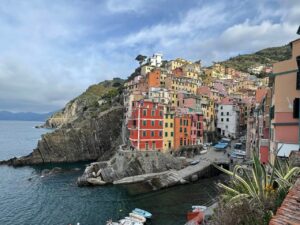Is South African Chenin any good? According to two international writers it is, and it isn’t. Frustratingly for local producers, mixed messages are being sent out. Locally we have been all “Yeah SA Chenin is the dog’s bollocks!” and then given a full-on smack-down by international writers: “Steady on there Saffas, your wines are definitely not all that.” What the hell is really going on?
Only the other day I posted here about an article in the New York Times that slammed our Chenin for being bland and uninteresting. There was also a Decanter article last year that rated a simple Fairview Chenin as 5 stars while giving the generally well regarded FMC by Ken Forrester only 2 stars and went on to bemoan the general state of our Chenins. And now a new piece in Decanter by Sarah Ahmed reckons that our Chenin is the dog’s bollocks. All very confusing.
In the NYT article, wine writer Eric Asimov wrote:
Instead of finding many bottles that we’d enjoy drinking, we were instead hard pressed to find many that we liked at all.
And one of the tasters who helped score wines for the article added:
The grape is not being celebrated here,” Carla said. “These have veered into a drink, rather than a wine.
Not great. But now in the September 2012 edition of Decanter magazine we see South African Chenins being lauded by writer Sarah Amhed. She says of South African Chenin:
Pilloried in the past, South African Chenin Blanc has had a new lease of life via savvy producers who realise the traditional workhorse can make complex, high-quality wines.
Huh? What the fuck is going on. It’s not as if the writers are saying, “look you either like South African Chenin or you don’t.” Some are saying it is incredible – Amhed gives 3 wines 95 points – and others are saying it is pretty kak – Asimov’s group’s highest score was two and a half stars. While those scoring systems are pretty different, any way you look at it 95/100 and 2.5/5 is a big difference.
Now before I end up having to untie my knotted knickers, I am not going to make too much of two articles with contradictory views on Cape Chenin. But I am going to briefly try to understand how this can happen.
The one issue being played out here I think is when international tasters set out to judge South African Chenin and their starting point is the Loire. Of course the Loire Valley is the historical home of Chenin Blanc, and so it shall always be. But that is no reason to make it the benchmark of all Chenins from around the world. I love snappy nervy Loire Chenin, I fucking adore the red wines from the Rhone, and Riesling, well, I’ll drink it all; but a totally Eurocentric view when tasting wines from other parts of the globe is problematic.
Wine people cannot help but compare.
“Oooh, this is so Rhone-like.”
“If I didn’t know I could have sworn this was from the Loire.”
“Are you telling me this isn’t Bordeaux?”
Of course those would all be thought of as positive comments. Which on the one hand is fair. On the other hand this Eurocentric view of wine means that it makes it a lot harder for South African Chenin to develop and claim its own identity.
Asimov starts off his piece by immediately setting up the Loire comparison in his second paragraph, where in Ahmed’s Decanter article she doesn’t make the comparison at all. This is telling.
If we are happy to classify Cape Chenin as something separate from Loire Chenin, do experts in Cape Chenin need to be regarded more highly than general wine-experts with a European bias? I am not entirely sure. But I think it is one of the reason we see such different responses to our wines.
Another problem is which wines are tasted. It makes no sense to lambaste an entire region when your selection of wines is not representative. Now, in Asimov’s tasting all the wines had to be readily available in the US. But with this being the case a comment like “The grape is not being celebrated here [South Africa]” is patently absurd. Of course Chenin is being celebrated in South Africa. Talk to Adi Badenhorst, Eben Sadie, Chris Mulleniux, Craig Hawkins, Sebastian Beaumont and Alex Dale and then tell me we do not celebrate Chenin. As I said, an absurd comment.
Although you could make that comment if you are tasting any of the over-cropped, young-vined, watery nonsense that we ship all over the world for a pittance. Pointless wines that hardly express the variety let alone where they are grown.
But just because we make a lot of really shoddy Chenin, does not mean South African Chenin is shoddy. Or does it? I think these poor wines are getting in the way of all the top stuff we are making.
Sarah Ahmed’s article will be welcomed in South Africa because it is not simply a blind tasting followed up with assertions about an entire category. She takes an in-depth look at various regions, winemakers and styles before recommending her top South African Chenins with her scores.
The problem is what the international view of our wines will be after these articles are read. That we make amazing Chenin is hardly breaking news. Out of Ahmed’s eight top wines, I have been happily punting seven of them for ages. Eben Sadie’s Chenin driven Palladius is a Cape Classic already, as well as the Mulleniux’s white blend. I have gone on and on about Craig Hawkins’ skin contact Chenins; Beaumont is always on my list of Chenins to try, and my bargain Chenin the Kleine Zalze Bush Vine is also on the list.
Happily the Radford-Dale Renaissance is there as well. This brightened me up considerably, as I have always thought The Winery of Good hope makes really top Stellenbosch Chenin; Chenin that steers away from high residual sugar and excessive oaking. Their Vinum Africa Chenin from a few vintages back was simply outstanding, and the Renaissance 2010 – from a single block of old, un-irrigated bush vine Chenin on the foot slopes of the Helderberg Mountain – is even better. A brilliant wine.
Top South African Chenin is amazing; it is not wine from the Loire, nor does it try to be. It is simply very, very, very good wine. However, these excellent examples are being blurred and lost in a lake of insipid wines that tarnish the name of South African Chenin Blanc.
Thankfully there are writers like Ahmed who have gone a further than a simple tasting, and researched the top wines, spoken to the producers and formed an opinion that is – in my opinion – a lot closer to the truth than the other articles on SA Chenin I have recently read.
[You can read the NYT article here. Unfortunately the Decanter one is not online. But if you ask me nicely in an email I will happily send it to you.]





